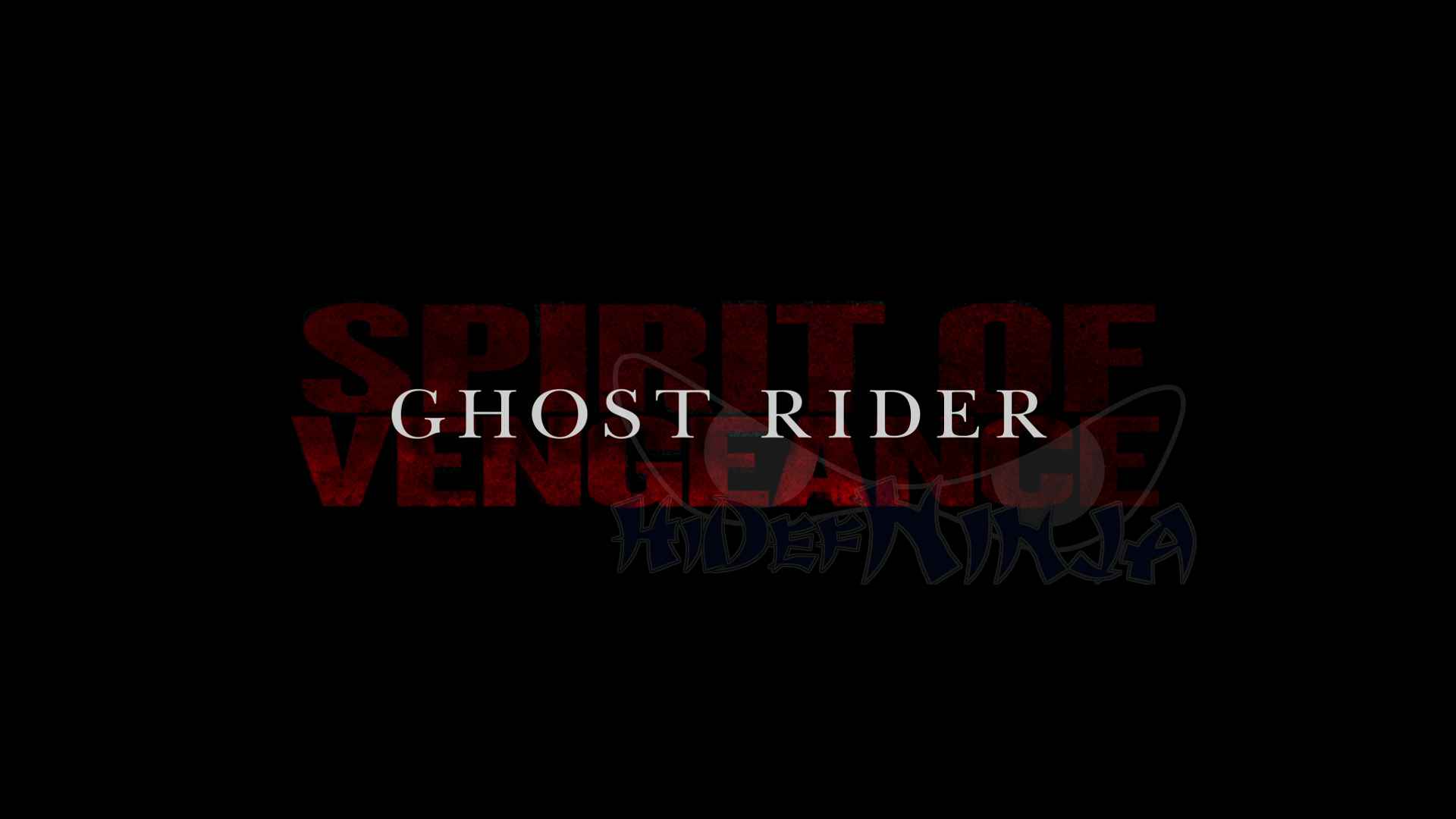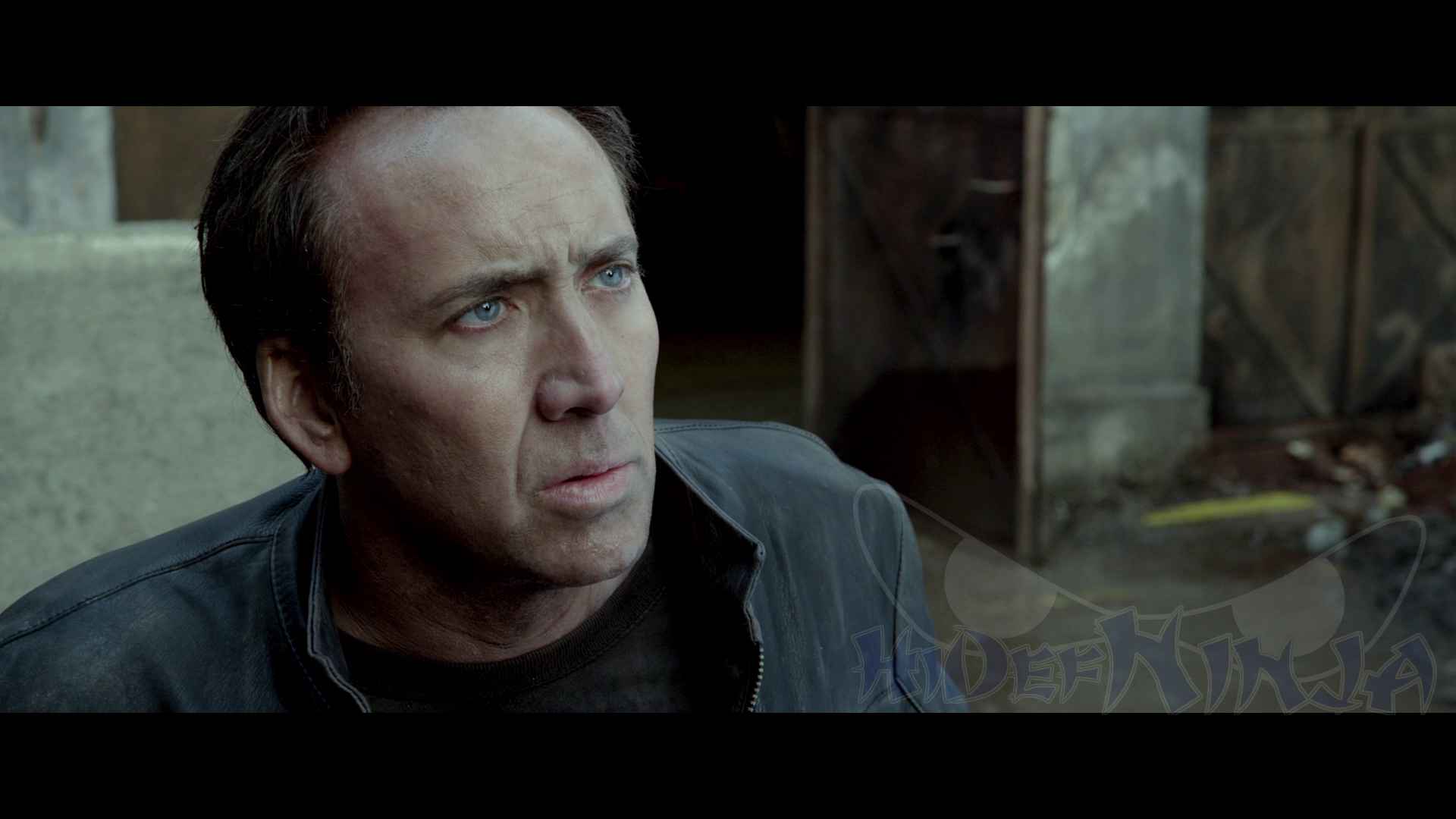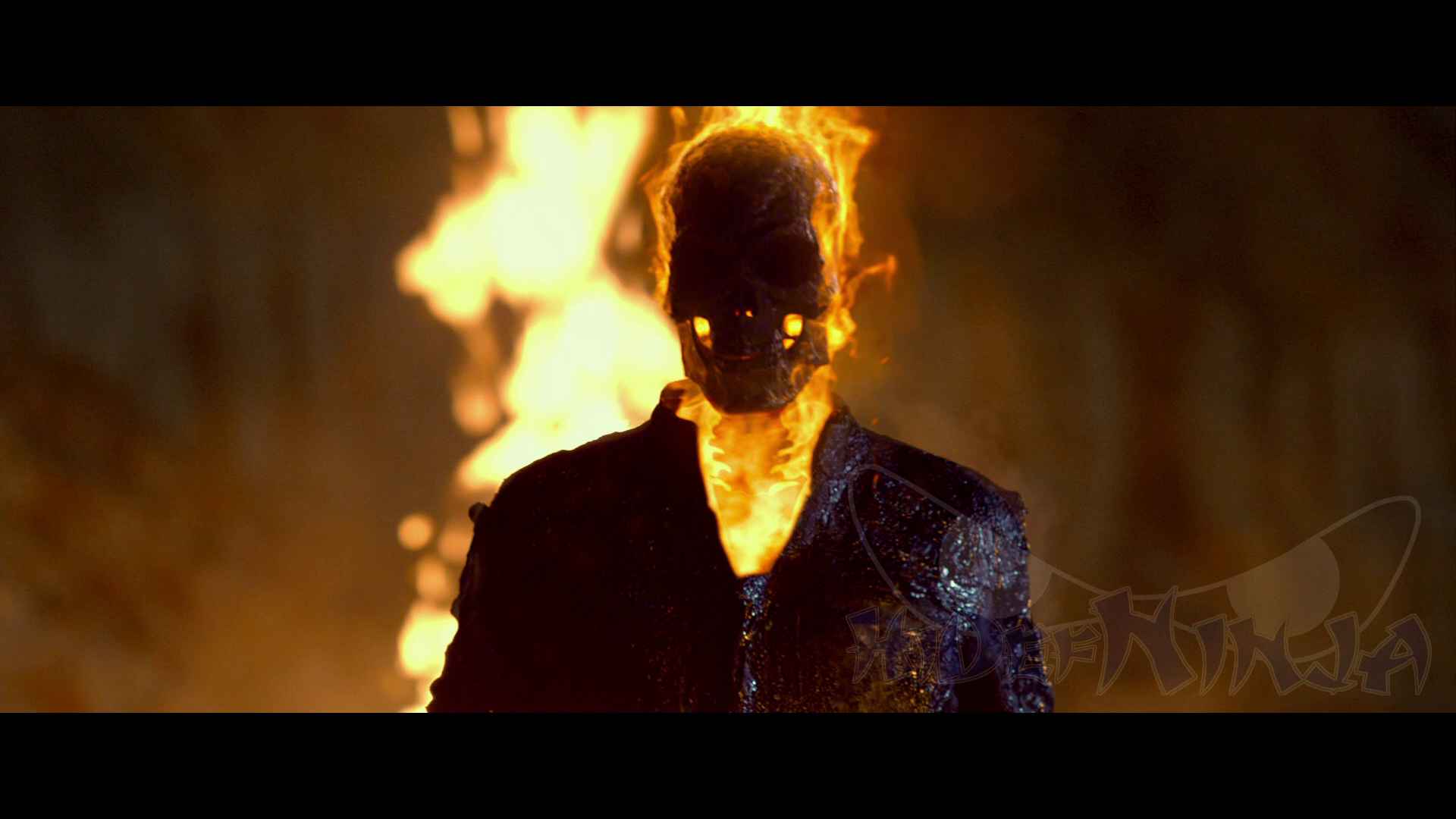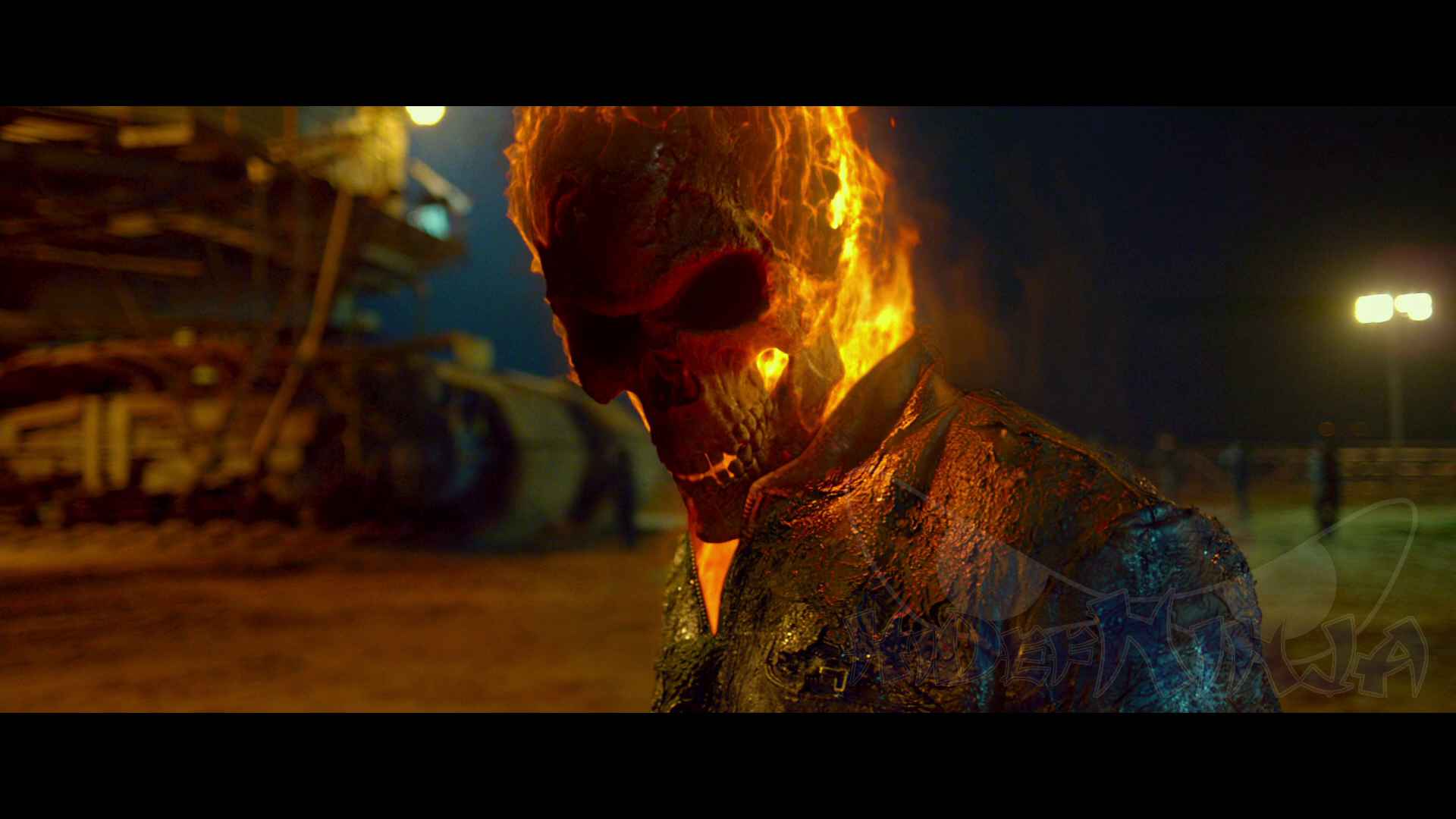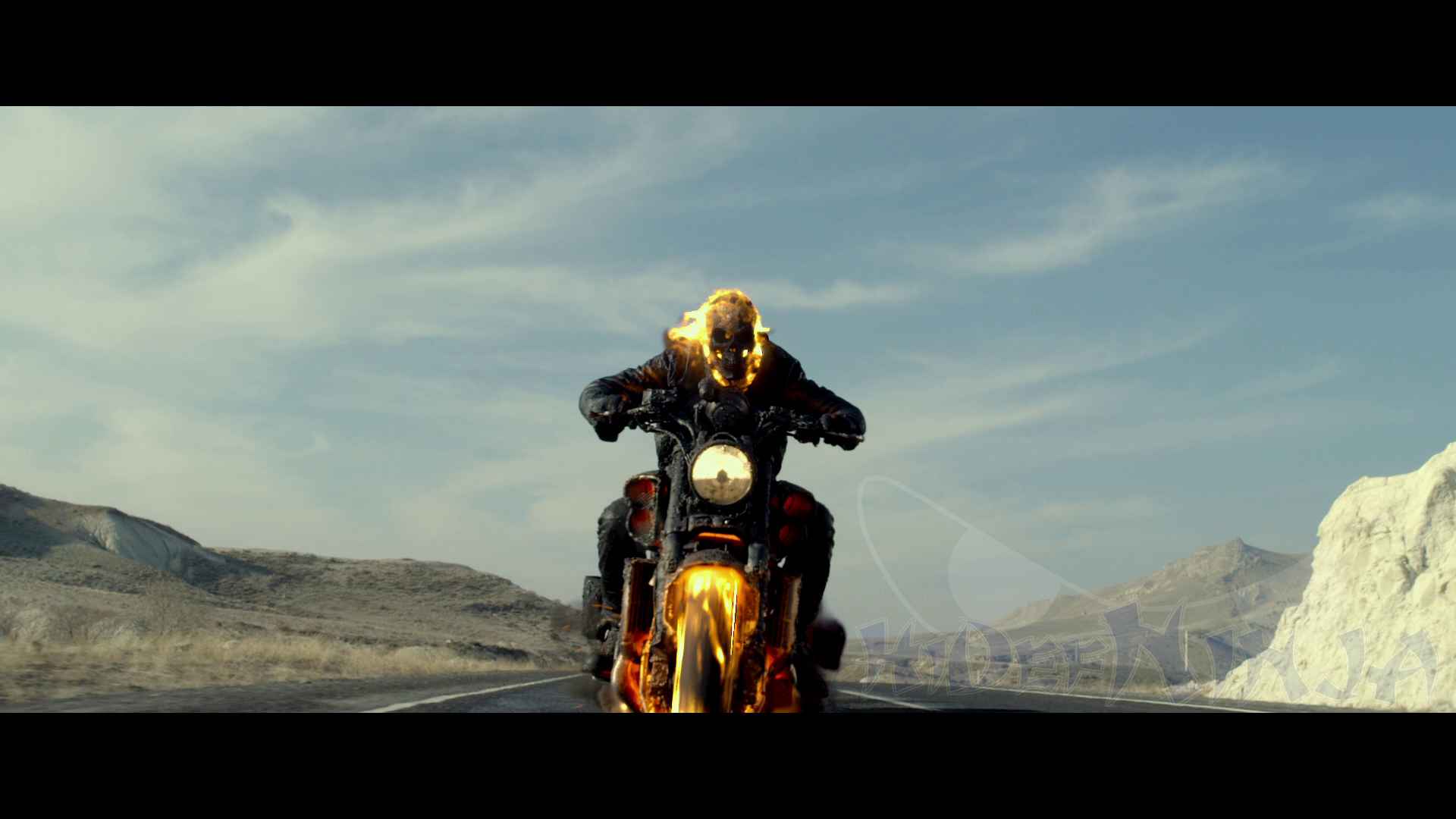Ghost Rider: Spirit of Vengeance is a visually exciting, intensely weird movie that suffers from serious and unavoidable errors of a rushed production schedule and a flimsy and poorly-prepared script. It’s a film that tries too hard to be different, recognized, and respected yet feels out of place, like a party guest who quickly wears out their welcome and is soon asked to leave. If the first Ghost Rider was plagued with mailed-in performances, a static script, and poor special effects, Spirit of Vengeance pulls itself out of some of that rubble, only to leave several of its brethren behind. It fails in so many other respects that it’s nearly impossible to see the good in it. The home release is quite a different story, as its transfer is top notch and supplements extremely informative.

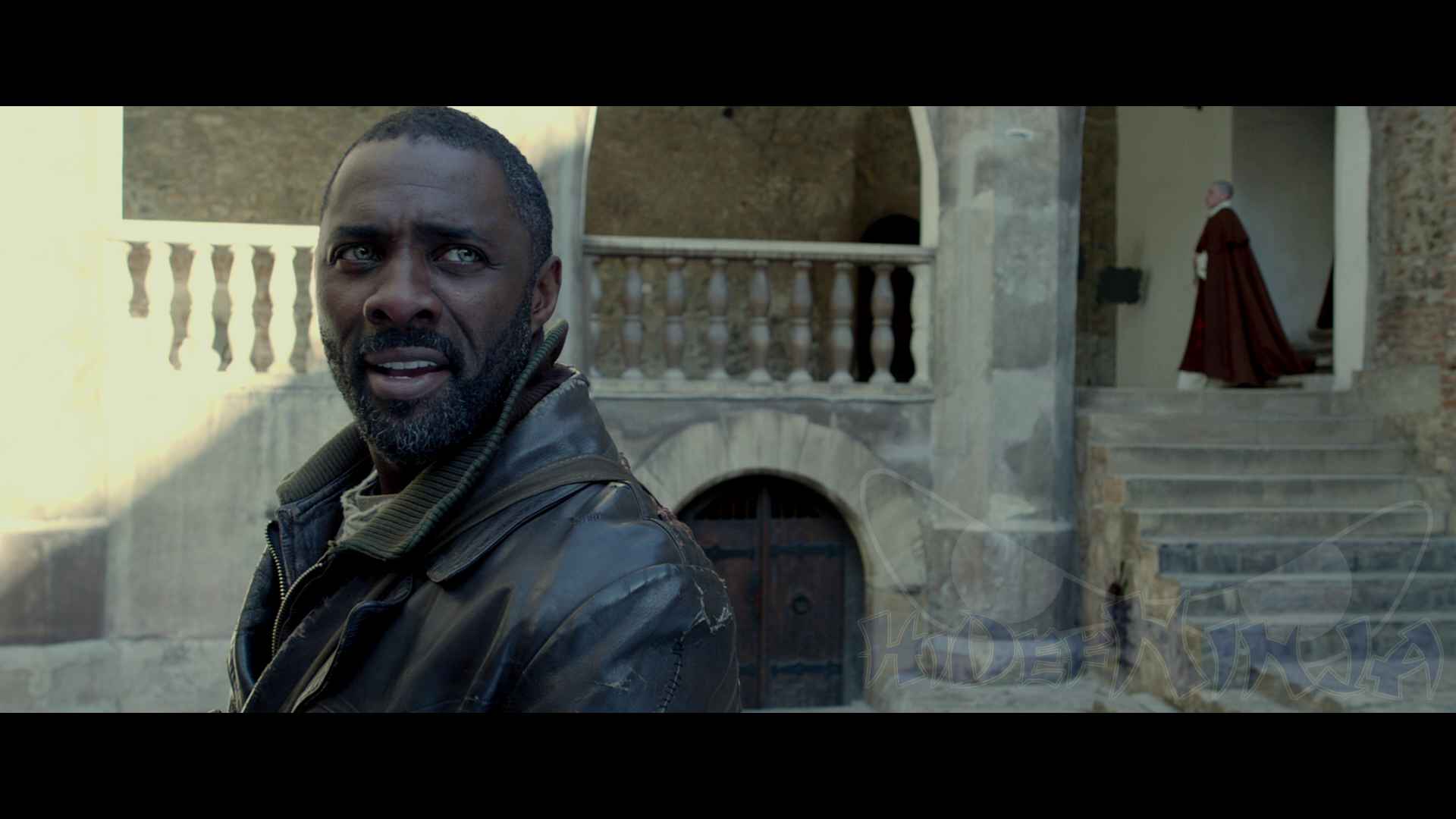 Johnny Blaze (Nicholas Cage, Raising Arizona) wants the life-sucking Ghost Rider out of his body, but is still running from “the deep hunger” which possesses him. Enter the priest Moreau (Iris Elba, Thor) who promises to do just that if Blaze will help rescue a boy with magical powers who is to be sacrificed by the Devil himself (Ciarán Hinds, Tinker Tailor Solider Spy). It’s a simple formula: assume the boy’s body, become immortal on Earth, plunge the planet into total darkness, and make the place his personal punching bag. However, it’s not long before none of that matters, as the film descends into roll-your-eyes clichés and one-liners that eventually violate one of the worst precepts of modern cinema: that CGI can save a movie when errors of story are present. As Blaze and Moreau race against the clock to protect the boy and his mother (Violante Placido, The American), the Devil alters the mother’s ex-boyfriend (Johnny Whitworth, Limitless) into a less-than-satisfactory nemesis for Rider. (Yeah, I read that last line and wonder how such a plot point was deemed satisfactory by the studio.) After The Rider deals with Carrigan, Rourke brings him back to life as Blackout, a creature who employs decay to kill his enemies. Blaze struggles throughout the film to separate his identity from that of The Rider, then learns he’s actually carrying an assassin/life-giving angel under his leathers, only to get the demon rider back just in time for an unappealing and flat climax. Even the appearance of Christopher Lambert (Highlander) as lead priest near the film’s end is simply misused. Lambert’s unique presence could have provided greater dramatic balance for Cage; instead, their few scenes together feel rushed and there’s not much chemistry to bridge the pseudo-cameo feeling. SOV is not a total loss, as several elements of the film look very good: the urination sequence is funny, and the comic backstories which appear a couple of times look terrific. But, there’s no incentive for the audience to love these characters, and those funny scenes are too few and far between to be relevant to the story. Directors Mark Neveldine and Brian Taylor, better known for 90-minute action films (Crank series) than for their abilities as cinematic heavy-hitters, should have seen disaster on the horizon yet somehow thought the CGI would carry the day. It’s very clear that while such pre-production missteps are only part of what killed this film, a crushing shooting schedule for an unfinished script didn’t help.
Johnny Blaze (Nicholas Cage, Raising Arizona) wants the life-sucking Ghost Rider out of his body, but is still running from “the deep hunger” which possesses him. Enter the priest Moreau (Iris Elba, Thor) who promises to do just that if Blaze will help rescue a boy with magical powers who is to be sacrificed by the Devil himself (Ciarán Hinds, Tinker Tailor Solider Spy). It’s a simple formula: assume the boy’s body, become immortal on Earth, plunge the planet into total darkness, and make the place his personal punching bag. However, it’s not long before none of that matters, as the film descends into roll-your-eyes clichés and one-liners that eventually violate one of the worst precepts of modern cinema: that CGI can save a movie when errors of story are present. As Blaze and Moreau race against the clock to protect the boy and his mother (Violante Placido, The American), the Devil alters the mother’s ex-boyfriend (Johnny Whitworth, Limitless) into a less-than-satisfactory nemesis for Rider. (Yeah, I read that last line and wonder how such a plot point was deemed satisfactory by the studio.) After The Rider deals with Carrigan, Rourke brings him back to life as Blackout, a creature who employs decay to kill his enemies. Blaze struggles throughout the film to separate his identity from that of The Rider, then learns he’s actually carrying an assassin/life-giving angel under his leathers, only to get the demon rider back just in time for an unappealing and flat climax. Even the appearance of Christopher Lambert (Highlander) as lead priest near the film’s end is simply misused. Lambert’s unique presence could have provided greater dramatic balance for Cage; instead, their few scenes together feel rushed and there’s not much chemistry to bridge the pseudo-cameo feeling. SOV is not a total loss, as several elements of the film look very good: the urination sequence is funny, and the comic backstories which appear a couple of times look terrific. But, there’s no incentive for the audience to love these characters, and those funny scenes are too few and far between to be relevant to the story. Directors Mark Neveldine and Brian Taylor, better known for 90-minute action films (Crank series) than for their abilities as cinematic heavy-hitters, should have seen disaster on the horizon yet somehow thought the CGI would carry the day. It’s very clear that while such pre-production missteps are only part of what killed this film, a crushing shooting schedule for an unfinished script didn’t help.

Ghost Rider: SOV is presented in a stunning MPEG-4/AVC transfer that’s clean and free of errors. Clarity is the name of the game here, with everything from the sweat on Cage’s face to his burned leather packet and skin pores on display in brilliant detail. The same goes for objects like Cage’s demonic motorcycle, distressed paint and broken concrete in the Romania locations, and the various rocky and sandy terrains that dominate near the end of the film. Shadows in night and outdoor scenes play nicely here, allowing us to see many layers of detail. Colors are balanced across the spectrum and never overstep themselves; there’s no bleeding and every scene is free of edge enhancement, although some haloing is present in one outdoor scene, which is what keeps me from giving this a perfect score. Yet this is so minor that most videophiles will probably ignore it based on the overall effect of the transfer. Sony absolutely delivered here, and from this standpoint the film exceeds expectation.
The 3D presentation of Ghost Rider: Spirit of Vengeance faired as well as the 2D presentation. For starters the picture is equally as crisp and pristine. The color reproduction is excellent. Now as far as the 3D goes, it has been added post production. This obviously affects the overall result of the picture, the 3D effects were decent to say the least. The depth of the picture during 3D effects were below expectation and the majority of the 3D scenes could of definitely looked better. This was a decent attempt at post production 3D, but far from worst.

If the SOV’s video is nearly perfect, the audio is actually more impressive, sporting an incredible DTS-MA 5.1 lossless soundtrack. Explosions, gunfire, and the roar of Rider’s motorcycle are as clear as the dialogue, which never suffers from the impressive and loud soundtrack. The LFE is frankly booming, delivering a rich low end that doesn’t let up throughout the picture. The surround track envelopes the listener in a variety of crowd noise, rattling chains, and other sound effects, leading one to believe you’re really a part of things. David Sardy’s score mixes rock pieces with chants and instrumental pieces quite well. None of it seems unnecessary, and his experience in rock music is clearly on display. It’s an impressive transfer, considering Sony spent so little on the film itself. Along with the video transfer, this element could represent one of the best of 2012.

Some videophiles prefer a staggering amount of special features, such as those contained in Mission Impossible IV or the Alien Anthology. There’s also something to be said for a compact set that s’s the same running length and provides the same amount of insight about the film. While SOV doesn’t have the most single features, the ones they offer provide excellent insight into several aspects of the film. Based on these, I’m inclined to give them a good score, because once you watch them, you will instantly know what kind of a trainwreck this film quickly became to produce. All are presented in HD, but don’t let their seemingly sparse number dissaude you:
- Director’s Expanded Commentary (1:43:00): This is a funny and informative look at the picture from the perspective of directors Taylor and Neveldine. They spend a lot of time explaining various aspects of production, and seem to be very happy with the way the film turned out. A chain-bordered box in the right corner shows us how several of the stunts were created, and our directors reappear from time to time to share other insights. In many ways, our directors spend a lot of time defending the film, but also try to place the viewer in the middle of the impossible schedule they were under. It’s appreciated and provides important lessons for inspiring film-makers.
- Deleted Scenes (11:20) – None of these were necessary to the story, with a few simply presenting extended versions of scenes already in the film. Deleted scenes include The Church, Penance Stare, Rental Car Scene, Vasil’s Fight Club, Wild Ride, Roarke Talks Fatherly.
- The Path to Vengeance – Making Ghost Rider: Spirit of Vengeance (1:22:53): This six-part documentary is the best of the supplements, taking the viewer through many aspects of production. After watching these, it’s very clear that our directors were presented with too many critical and early challenges that doomed the project before shooting even began. When you learn that parts of the script was being be written on set, that our directors were hired only 3 months before shooting. and that the look of Blackout hadn’t been finalized prior to shooting, it gives you a different perspective on the final product. Again, these presentations are excellent material for how not to produce a movie, and should be watched by every film student. Excerpts include Blazing a New Path (8:31), Patience is Not A Virtue (25:31), We Will Burn This City to Bitter Ashes (8:50), To Hell and Back: Production (24:31), Walking in Both Worlds: Post-Production (15:32).
- Riding Into Another Dimension (7:07) – This featurette shows the production crew discussing the decision to convert the film to 3D.
- Previews

There are several aspects of Ghost Rider: Spirit of Vengeance which presented avoidable but destructive consequences for the film. Poor casting decisions (particularly with the boy and his mother) along with failure to use talent effectively pop up in several key sequences. The home release is actually quite good, with a great video and audio transfer. I doubt we’ll see Cage in another Rider film anytime soon, and the future of the franchise in general is certainly in doubt. For now, enjoy this movie and pick up the Viva Metal Pack. You could do a lot worse.


